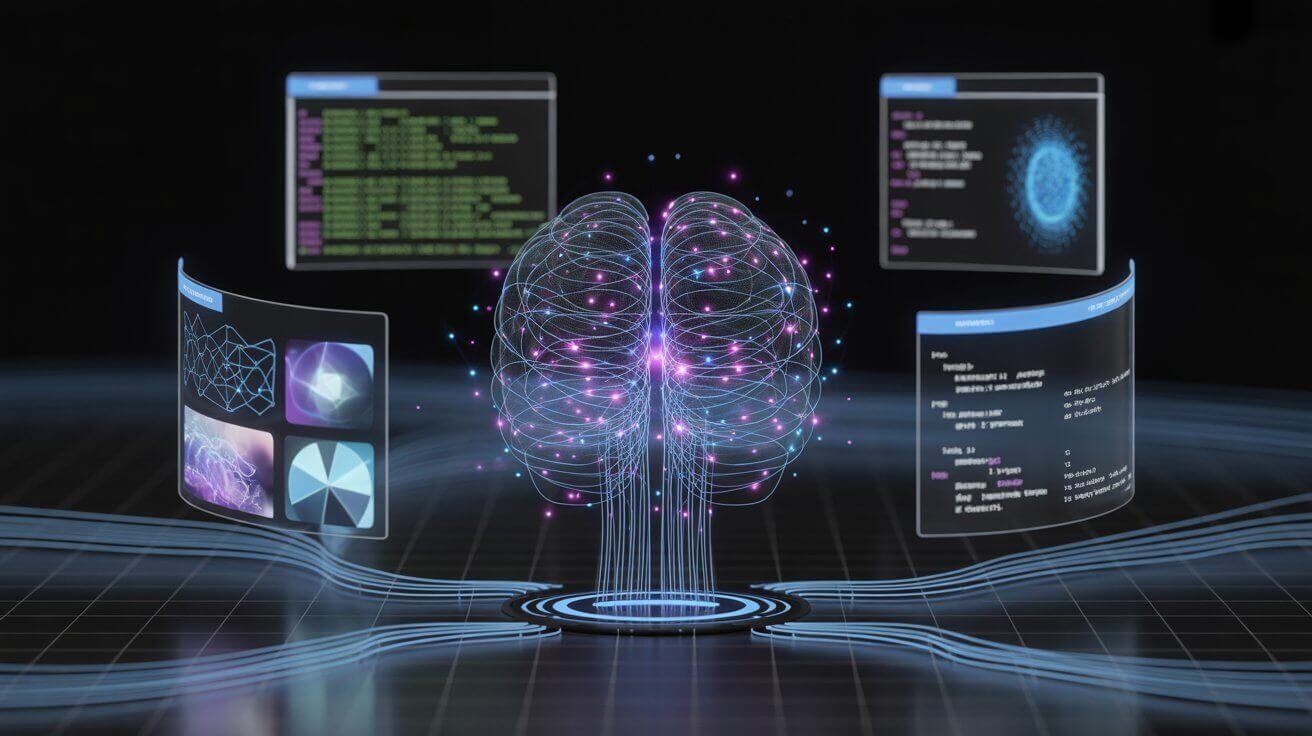Physical Address
304 North Cardinal St.
Dorchester Center, MA 02124
Physical Address
304 North Cardinal St.
Dorchester Center, MA 02124

Discover GPT-5 capabilities: advanced reasoning, multimodal processing, reduced hallucinations, and unified AI experience that transforms how we work with AI
OpenAI just dropped GPT-5, and honestly, it’s kind of mind-blowing. After months of speculation and leaks, we finally get to see what all the hype was about. Moreover, the GPT-5 capabilities are genuinely impressive, combining advanced reasoning with multimodal processing in ways that make GPT-4 feel outdated. Furthermore, these GPT-5 capabilities represent a fundamental shift in how AI systems work, moving from simple text generation to true problem-solving intelligence.
I’ve been testing it since the August 7th release, and the difference is immediately obvious. But here’s what’s really interesting: instead of just being “better,” GPT-5 works completely differently under the hood.
Unlike previous models where you had to choose between different versions, GPT-5 uses what OpenAI calls a “real-time router”. This system automatically decides whether to use quick responses or deeper reasoning based on your question.
Think of it like having a smart assistant that knows when to give you a fast answer versus when to really think through a complex problem. The GPT-5 capabilities include this seamless switching between modes, so you don’t have to worry about picking the right model anymore.
Here’s where things get exciting. GPT-5 combines the reasoning abilities of OpenAI’s o3 models with traditional language generation. According to OpenAI’s benchmarks, it scored 94.6% on AIME 2025 math problems and 74.9% on SWE-bench coding challenges.
But what does this mean in practice? The model can now handle multi-step problems that would have stumped earlier versions. Additionally, it can maintain logical consistency across longer conversations, making it genuinely useful for complex tasks.
One of the biggest frustrations with earlier AI models was their tendency to make things up. However, GPT-5 addresses this head-on. OpenAI reports that GPT-5 responses are 45% less likely to contain factual errors compared to GPT-4o, and when using extended reasoning, that jumps to 80% fewer errors.
This improvement comes from better training techniques and the model’s enhanced ability to recognize when it doesn’t know something. Consequently, you can trust its answers more, especially for important decisions.
While GPT-4 could handle text and images, the GPT-5 capabilities extend this much further. The model can process text, images, audio, and potentially video all within the same conversation. Furthermore, it maintains context across all these formats, creating a truly unified experience.
During OpenAI’s demonstration, they showed GPT-5 generating a complete website from a simple description. The result? Six hundred lines of functional code created in seconds, with proper styling and responsive design.
For developers, this is huge. GPT-5 achieved state-of-the-art results on coding benchmarks, and early feedback from companies like Cursor and Windsurf confirms it’s the smartest coding model they’ve used.
The model excels at:
The enhanced reasoning abilities make GPT-5 particularly valuable in healthcare. Companies like Amgen are already seeing improved accuracy when navigating complex scientific contexts. Moreover, the model’s ability to understand ambiguity and context makes it more reliable for medical applications.
With its improved agent-like behavior, GPT-5 can now handle multi-step business processes more effectively. The model can plan, execute, and adapt tasks automatically, making it valuable for workflow automation. Additionally, its integration with tools like Microsoft 365 Copilot enables sophisticated business applications.
The GPT-5 capabilities extend beyond technical tasks. The model shows improved emotional intelligence and creativity, making it better at writing, tutoring, and creative collaboration. Furthermore, its enhanced understanding of human intent makes interactions feel more natural and productive.
GPT-5 is available now to all ChatGPT users, with different usage limits based on your subscription. Free users can access the basic model, while Plus subscribers get more usage, and Pro subscribers get access to GPT-5 Pro with extended reasoning.
The best part? You don’t need to change how you interact with ChatGPT. The system automatically chooses the right approach for your requests.
To get the most from GPT-5 capabilities, try these approaches:
For businesses, GPT-5 is available through the OpenAI API in three variants: GPT-5, GPT-5-mini, and GPT-5-nano. This flexibility allows you to balance performance, cost, and latency based on your specific needs.
Sam Altman described GPT-5 as “an important step towards AGI.” While we’re not there yet, the model’s ability to reason, plan, and execute complex tasks represents significant progress. Moreover, its unified approach to different AI capabilities suggests future models will be even more versatile.
The GPT-5 capabilities will likely accelerate AI adoption across industries. With better reliability, reduced hallucinations, and improved reasoning, organizations can trust AI with more critical tasks. Additionally, the simplified user experience removes barriers that previously limited AI adoption.
OpenAI continues to refine the model based on user feedback and real-world usage. The company is also working on expanding its capabilities, potentially including video processing and even more advanced reasoning abilities.
GPT-5 isn’t just an incremental improvement—it’s a fundamental shift in AI capabilities. The combination of advanced reasoning, multimodal processing, and reduced hallucinations creates a tool that’s genuinely useful for complex, real-world problems.
Whether you’re a developer looking for better coding assistance, a business professional seeking workflow automation, or someone who just wants more reliable AI help, the GPT-5 capabilities offer something valuable. Moreover, the simplified user experience means you can focus on your work instead of figuring out which AI model to use.
The future of AI assistance is here, and it’s more capable, reliable, and intuitive than we imagined. Try it yourself and see how these enhanced capabilities can transform your work.